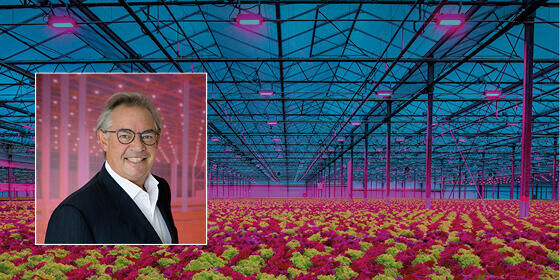News
GroentenNieuws: Fine-tuning for the LED subsidy has started
The switch to LED lighting in greenhouse horticulture has been in full swing for years. That is not without reason, the lighting has a lot of advantages. It ensures a longer growing season and energy savings. Growers hope to receive a subsidy from the goverment when purchasing LED lighting soon .
The difference between traditional greenhouse lighting and LED lighting is increasing. LED lighting has become a lot more efficient and cheaper in recent years. Jan Mol from Oreon sees the difference getting bigger. “When we started in 2009, we had 50% savings over traditional lighting. You can now save up to 80%.
According to Jan, LED lighting has proven its worth. “When I look at lettuce grown under LED lighting, you can see that there is higher quality and higher yield. It also ensures less waste and that in turn reduces labor costs. Another important advantage is that you can reuse the heat from the lamps. In fact, LED lighting only has pluses”.
When you read all these advantages you may wonder why not everyone switches to LED lighting right away. "Despite the much lower energy costs, longer life and all other pluses, the purchase costs are still quite high compared to HPS. This may change with the future subsidy form the Dutch government. This regulation will make growers decide more quickly to switch to LED lighting. Demand for LED lighting will therefore increase, which will have a favorable effect on prices during this phase. ”
Full spectrum is sub-optimal
The draft regulation states that the government requires a minimum amount of green light in the event of a subsidy. However, for many growers this is a sub-optimal solution. Mol finds it a strange demand: “The grower chooses a specific light recipe based on the needs of his crop. In his view, that delivers the best result and that should be leading. He should not be forced to choose a sub-optimal solution from the subsidy regulation, purely to qualify for the subsidy. It makes more sense to look at energy savings. That is what the regulation is for and that is why we need to test it. ”
The final steps to fine-tune the scheme are currently being considered. “There is a concept and it states which requirements you have to meet. There is a minimum requirement of 3.0 micromoles per joule. That makes sense. This separates the wheat from the chaff. ”
Jan hopes that the scheme will come into effect in the autumn: "It would be nice if the government could speed thing ups, because then growers could use it the upcoming lighting season and start saving immediately."
Point 24
When Urgenda announced her 40-point plan to ensure that the agreements from the Paris climate agreement would also be met, Oreon was approached. Oreon was asked to provide insight into the CO2 savings in horticulture resulting from the use of LED lighting. “Of course we wanted that!” Says Jan. “We put the facts on the table together with other involved parties and then the truth soon emerges. LED lighting in greenhouse horticulture can make a huge contribution to saving CO2 emissions. ”
“We were very proud that one of the recommendations, point 24, has become an incentive for LED lighting in greenhouse horticulture. It is even nicer that the government seems to adopt the recommendation, but the celebrations can only begin when the subsidy is actually in place. As said, I hope that this will succeed this fall.”

